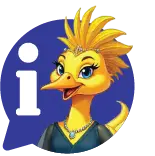Welcome to Narcotics Anonymous
What is our message? The message is that an addict, any addict, can stop using drugs, lose the desire to use, and find a new way to live. Our message is hope and the promise of freedom.

“When new members come to meetings, our sole interest is in their desire for freedom from active addiction and how we can be of help.”
It Works: How and Why, “Third Tradition”
Is NA for me?
This is a question every potential member must answer for themselves. Here are some recommended resources that may be helpful:
Need help for family or a friend?
NA meetings are run by and for addicts. If you're looking for help for a loved one, you can contact Narcotics Anonymous near you.
Subscribe to NAWS Emails
Sign up to receive Just for Today and SPAD daily meditation emails, as well as NAWS News, NAWS Updates, and more.
Never before have so many clean addicts, of their own choice and in free society, been able to meet where they please, to maintain their recovery in complete creative freedom.
Basic Text, “We Do Recover”
Recovery Quicklinks:
Service Quicklinks:
Narcotics Anonymous sprang from the Alcoholics Anonymous Program of the late 1940s, with meetings first emerging in the Los Angeles area of California, USA, in the early Fifties. The NA program started as a small US movement that has grown into one of the world's oldest and largest organizations of its type.
Today, Narcotics Anonymous is well established throughout much of the Americas, Western Europe, Australia, and New Zealand. Newly formed groups and NA communities are now scattered throughout the Indian subcontinent, Africa, East Asia, the Middle East, and Eastern Europe. Narcotics Anonymous books and information pamphlets are currently available in 49 languages.
Information About NA
Daily Meditations
Just for Today
October 30, 2025 |
Courage |
| Page 316 |
| “Our newly found faith serves as a firm foundation for courage in the future.“ |
| Basic Text, p. 96 |
| Narcotics Anonymous is no place for the faint of heart! Facing life on life's terms without the use of drugs isn't always easy. Recovery requires more than hard work; it requires a liberal dose of courage. What is courage, anyway? A quick look at a dictionary will tell us. We have courage when we face and deal with anything that we think of as difficult, dangerous, or painful, rather than withdrawing from it. Courage means being brave; having a purpose; having spirit. So what is courage, really? Courage is an attitude, one of perseverance. That's what an addict in recovery really needs–perseverance. We make that commitment to stick with our program, to avoid using, no matter what happens. A courageous addict is one who doesn't use, one day at a time, no matter what. And what gives us courage? A relationship with a Higher Power gives us the strength and the courage to stay clean. We know that, so long as we are in our God's care, we will have the power we need to face life on its own terms. |
| Just for Today: I have a Higher Power who cares for me, no matter what. Knowing that, I will strive to have an attitude of courage today. |
A Spiritual Principle a Day
October 30, 2025 |
Contemplating the Gift of Grace |
| Page 313 |
| “Each day, we are faced with new challenges. And each day, through working our program of recovery, we are given the grace to meet those challenges.“ |
| Just for Today, “Meeting the day's challenge,” May 27 |
| Life is beautiful–and we may experience immense joy and serenity and love and all that good stuff–but it ain't easy. What addict will argue with that point? However, by getting and staying clean in NA, we develop the competence to deal with life on its own terms. Those “terms” refer not only to immense life-changing events but also to daily challenges that arise in work, family, and relationships. Ideally, meeting those challenges involves acceptance of our limited power, the courage to act in spite of this, and surrendering to the result. We do this with the gift of grace. For some of us, the challenge we experience with grace is its intangibility. We don't really know what it is or where this gift is coming from. But maybe we don't have to fully understand grace to receive it. Many of us are reluctant to use “grace” in our everyday language about recovery. We may bristle at its religious undertones, given that it's most often paired with “God,” as in “God's grace.” What if we don't conceive of our Higher Power as an almighty giver of gifts like grace or staying clean or life itself? Members who hold more traditional conceptions of a Higher Power may find it easier to accept the gift of grace. The rest of us may hesitate, especially if we feel ill equipped to define a gift we're supposed to be getting and then complicate matters by obsessing about the source of this gift. Perhaps we can look at NA itself as the source of the gift of grace because it teaches us to surrender, be humble, and act with integrity. In essence, the program shows us how to live in accordance with our values. We can achieve a state of grace by striving to do just that. |
| ——— ——— ——— ——— ——— |
| Today I will put grace into action by approaching life's challenges with integrity and being grateful for the opportunity to do so. Even if I don't fully understand the gift of grace, I will accept it anyway. |
Do you need help with a drug problem?
“If you’re new to NA or planning to go to a Narcotics Anonymous meeting for the first time, it might be nice to know a little bit about what happens in our meetings. The information here is meant to give you an understanding of what we do when we come together to share recovery…”
Subscribe to NAWS Emails
Sign up to receive NAWS Updates and NAWS News emails as well as Just for Today and SPAD daily emails.



